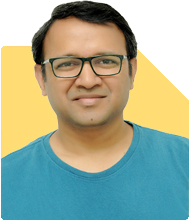Hi sir, I have net salary of 2.7L per month and am 46 year old with 2 children aged 12 and 6. I have a EPF+PPF corpus of 65 lakhs , NPS 5 lakhs, 1CR in MF portfolio, invest 50k monthly (Which is on Hold currently) in MF SIPs. I own a house 65L(loan free) & another house 2CR have outstanding loans of 1CR. I have family floater medical insurance with 20L coverage and life cover for 1Cr. I wish to retire by age of 55 - pls advise how much corpus do I need at hand to retire. Consider my monthly expense as 1L
Ans: You are 46 years old with a net salary of Rs. 2.7 lakh per month. You have two children, aged 12 and 6, and a current corpus of Rs. 65 lakh in EPF and PPF, Rs. 5 lakh in NPS, and Rs. 1 crore in your mutual fund portfolio. Additionally, you own two properties, one valued at Rs. 65 lakh (loan-free) and another valued at Rs. 2 crore, with an outstanding loan of Rs. 1 crore. Your current monthly expenses are Rs. 1 lakh, and you have paused your monthly SIP of Rs. 50,000. You also hold a life insurance cover worth Rs. 1 crore and a family floater medical insurance with Rs. 20 lakh coverage.
You plan to retire by the age of 55, which gives you approximately nine years to build a sufficient corpus. Let's explore how much you need to comfortably retire while sustaining your current lifestyle.
Estimating Your Retirement Corpus
To determine your retirement corpus, we need to consider several factors:
Current monthly expenses: Rs. 1 lakh
Retirement age: 55
Post-retirement years: Assuming life expectancy of 85 years, you need to plan for 30 years post-retirement.
Inflation rate: An assumed inflation rate of 6% per year is a reasonable estimate for the future.
Growth rate of investments: Typically, diversified equity mutual funds have delivered around 10-12% returns over the long term.
Based on these factors, your current monthly expenses will increase due to inflation, and you need a corpus that generates enough to cover these rising costs. Since your expenses are Rs. 1 lakh today, they could double or triple over time. Your corpus should be able to sustain this without depleting prematurely.
Breakup of Current Assets
EPF & PPF (Rs. 65 lakh): These are stable, low-risk assets that will help you post-retirement but won't generate high returns.
NPS (Rs. 5 lakh): Provides tax benefits and is specifically designed for retirement savings. It will grow over time but is not highly flexible for withdrawals until retirement age.
Mutual Funds (Rs. 1 crore): This is an excellent foundation for your retirement plan. Equity mutual funds, in particular, have the potential to grow at a faster rate and combat inflation.
Real Estate (Rs. 65 lakh + Rs. 2 crore): While real estate holds value, its liquidity is limited. The house you live in does not contribute to your retirement corpus unless you plan to downsize. The second house has a loan of Rs. 1 crore, and the EMIs for this property must be factored into your pre-retirement cash flows.
Life Insurance (Rs. 1 crore): While it’s important for your family’s protection, this doesn’t contribute to your retirement corpus.
Estimating Your Future Monthly Expenses
Your current monthly expense is Rs. 1 lakh, but due to inflation, this figure will increase. Let’s assume the inflation rate remains at 6%. By the time you retire at 55, your monthly expenses will likely double or triple, reaching anywhere between Rs. 1.7 lakh to Rs. 2 lakh per month. Your retirement corpus should be large enough to generate this amount without running out of funds.
In addition, you’ll have to account for:
Healthcare costs: As you age, medical expenses tend to rise. Even though you have Rs. 20 lakh family floater insurance, post-retirement medical costs not covered by insurance should be factored in.
Educational expenses: Your children’s education could be a significant expense over the next 10 to 15 years.
Corpus Required for Comfortable Retirement
To maintain your current lifestyle, you would need a corpus that generates at least Rs. 2 lakh per month during retirement. Based on a withdrawal rate of 4%, which is commonly used to ensure the corpus lasts for the entirety of your retirement, you’ll need a retirement corpus of approximately Rs. 6 to 7 crore.
This corpus will ensure that you can comfortably cover your rising living expenses, healthcare, and other unforeseen costs without depleting your savings.
Recommendations to Achieve the Corpus
Here’s a detailed plan to help you achieve your target of Rs. 6 to 7 crore before retirement:
1. Resume Your SIP Investments
Restart your monthly SIP of Rs. 50,000 immediately. This is crucial, as equity mutual funds can provide the high returns needed to meet your retirement goal.
Consider increasing your SIP contribution each year in line with salary increments. This will accelerate your corpus growth and help you fight inflation more effectively.
2. Focus on Equity Mutual Funds
Given your long-term horizon (9 years until retirement), equity mutual funds remain the best investment option to grow your wealth. These funds have historically provided higher returns (10-12% CAGR), which will be essential for building your retirement corpus.
Ensure your portfolio is diversified across large-cap, mid-cap, and multi-cap mutual funds for balanced growth and risk.
3. Debt Repayment Strategy
You currently have an outstanding home loan of Rs. 1 crore. It’s advisable to clear this debt as early as possible. Carrying such a large debt into retirement can strain your finances.
Use a portion of your liquid assets, such as your mutual fund corpus or any bonuses, to reduce the loan burden gradually. This will free up cash flow and allow you to focus more on building your retirement fund.
4. Maximize Your EPF & PPF Contributions
Continue contributing to your EPF and PPF accounts. While the returns from these are modest, they are low-risk and provide tax-free returns, making them ideal for post-retirement stability.
As PPF matures, consider reinvesting the proceeds into equity mutual funds to capitalize on higher returns.
5. Increase Contributions to NPS
Your NPS balance is currently Rs. 5 lakh. Increase your contributions to this as it provides excellent tax benefits and is tailored for retirement.
NPS is also one of the few products where withdrawals are partially tax-free. Increasing contributions now will give you a more substantial corpus in the future.
6. Prioritize Children’s Education
Plan separately for your children’s education expenses. You might want to use specific child education funds or a combination of mutual funds for this.
Avoid dipping into your retirement savings for education purposes. Set clear boundaries between these two financial goals.
Final Insights
At 46, you are well-positioned financially, but pausing your SIP investments and holding onto a large loan could hinder your retirement plans. Restart your investments and focus on paying off your loan as soon as possible. By maintaining discipline and increasing your contributions to SIPs, NPS, and PPF, you should comfortably achieve your retirement corpus of Rs. 6 to 7 crore. Prioritize growth-oriented investments like equity mutual funds, and continue evaluating your portfolio annually to ensure it aligns with your retirement goals.
Best Regards,
K. Ramalingam, MBA, CFP,
Chief Financial Planner,
www.holisticinvestment.in













.jpg)














